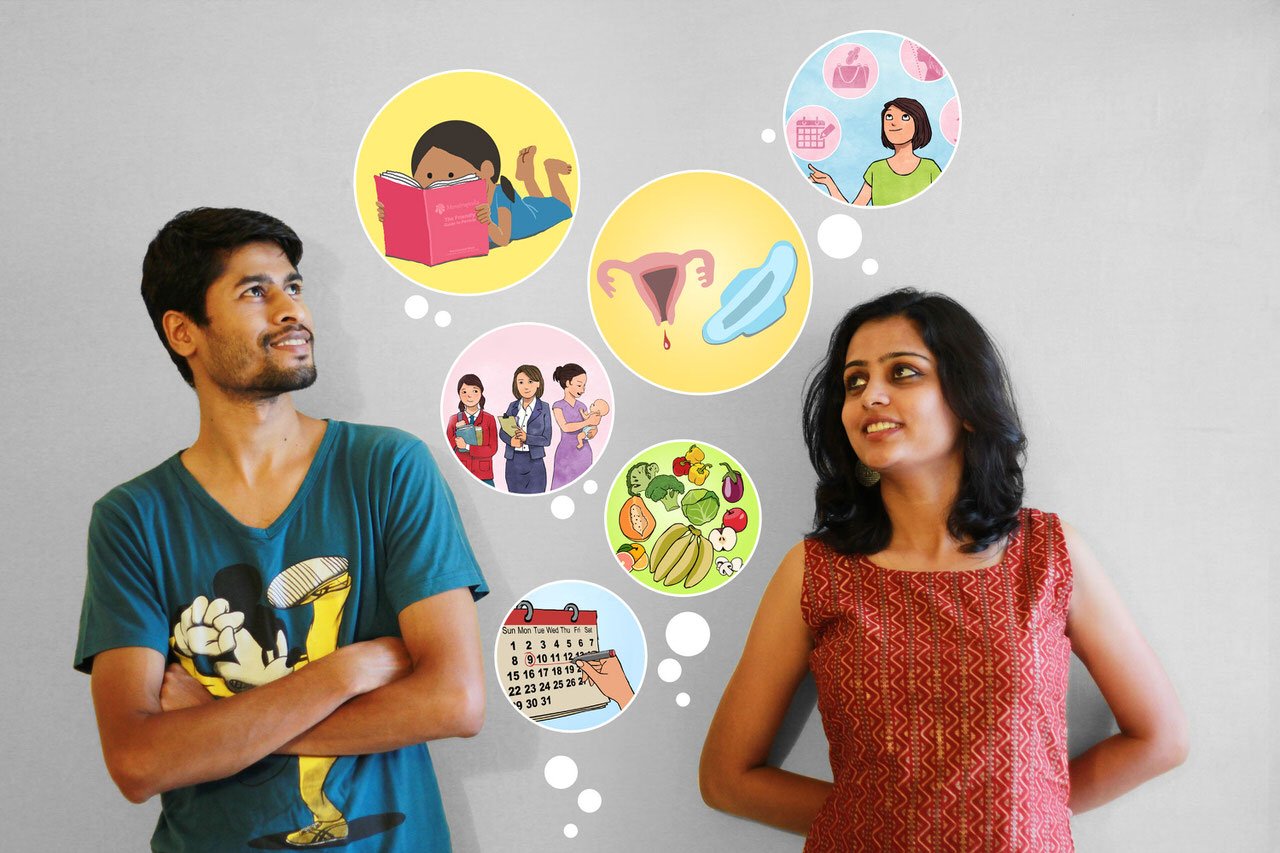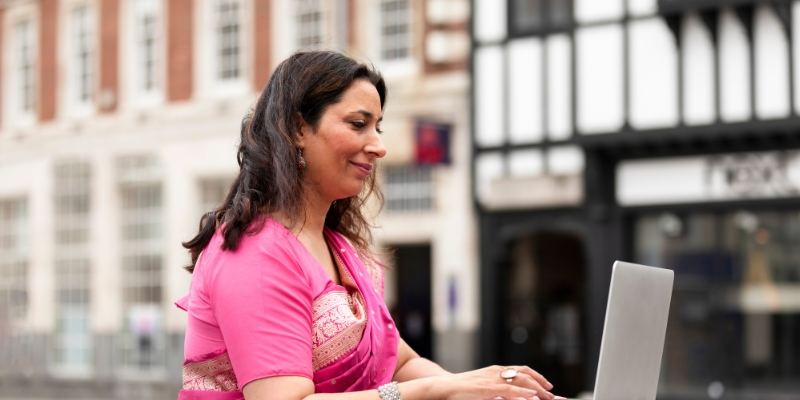Shattering all myths and misunderstandings around menstruation through their comic books, Menstrupedia has made conversations about menstruation easier. Menstruators (people who menstruate) require basic information to stay healthy and active during their periods. This passionate couple, aim to deliver informative and entertaining content through different media to people in as many languages as possible. The information is provided in such a manner that it is easy to understand and also addresses the taboos around menstruation. The aim is to make conversations around menstruation a mainstream discussion, shedding the shame around it and include men and boys.
We asked Aditi Gupta, Founder and Tuhin Paul, Co-founder to share their story with us.
Q1. Menstruation is still considered a taboo in India. What motivated you to work on it?
Aditi: I started my periods at about 12 years of age and the worst thing that came with it were the restrictions due to wide spread menstrual myths. Like not being allowed to touch or eat pickle, not allowed inside temple, among others. Women get branded as impure. Even today in front of temples we see sign boards denying entry to menstruating women and girls. And the worst thing is, it isn’t just my story but the story of millions of girls in India who are suffering in silence due to these myths.
Tuhin: When Aditi mentioned these various restrictions due to menstruation, I was completely shocked at the outlook our society has about a normal and essential body function. The first thing I did was read about it online, gathered some basic information and shared them with Aditi, expecting she would already know about it.
Aditi: However, there were basic facts that were not known to me despite having access to different sources of information. I was conditioned to believe that it is alright to be unaware about menstruation and accept social norms around it.
Then it struck us that, if we, being well educated were so ill-informed, then there would be millions of young people out there who would be ill-informed too. Leaving them vulnerable to unhygienic menstrual practice, lowering their self-esteem and self-confidence due to the inherent shame attached to menstruation. We realised there is an absence of proper information, hence young people assimilate these myths and misinformation, and pass it on to their friends, later even to their children.
Q2. Who all were involved in the process of forming Menstrupedia? How did you make it economically sustainable?
T: Being communication designers we took up this challenge upon ourselves. We decided to create educative material about menstruation with 2 main objectives:
- Elimination of the sense of shame by being period positive,
- Help young people learn about menstruation on their own in a fun and interesting way.
A: We got the content reviewed by an experienced OB/GYN for medical accuracy. We had funding issues initially but through a successful crowd funding we managed to develop funds to get the comic books printed and start their distribution.
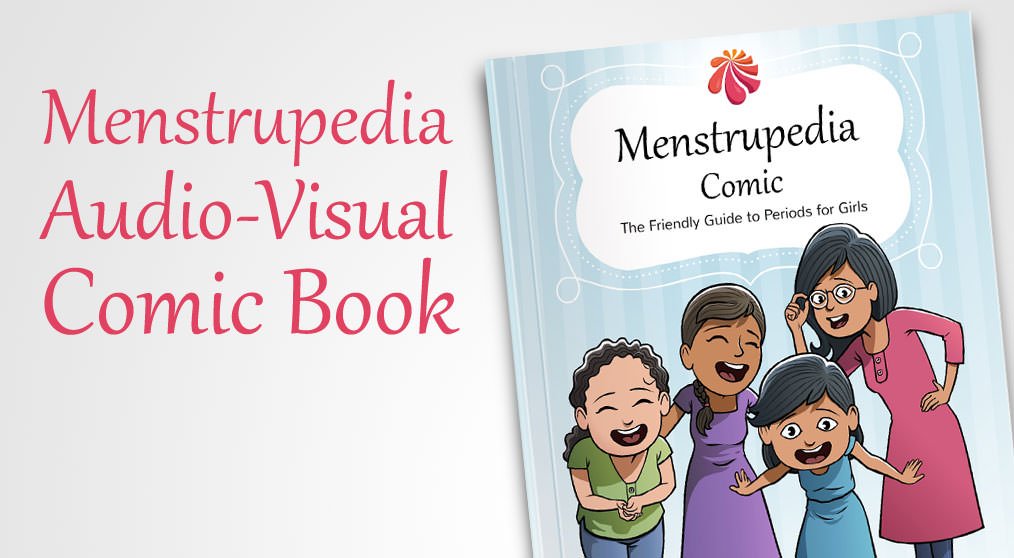 Q3. What was the target group you aimed for and what challenges did you face?
Q3. What was the target group you aimed for and what challenges did you face?
T: Our target group were three categories of young people:
- Young people who haven’t started their periods and do not know what menstruation means.
- Young people who have just started their periods and are curious about menstruation.
- And young people who have had their periods, regularly and know what menstruation is but they are curious about the various customs followed around it.
To address these three categories we have the three main characters: Pinki who has not gotten her periods, Jiya who has gotten her first period and Mira who has been getting her periods and is aware of the myths, misinformation and misconceptions around periods. There is also a fourth character, Priya didi, who guides Pinki, Jiya and Mira through their process of learning about menstruation in the comic. She is a young doctor, which adds credibility to what she says. She is friendly and jolly so that the readers can relate to her.
Before we came up with the comic book, there was a prototype, like a large pamphlet in Hindi language.
A: Despite a very positive response, we had to shut the project due to lack of funds. Over time people used the prototype so much and made repeated requests to use them in menstruation awareness workshops. So we uploaded the comic for it to reach a larger audience.
Q4. How did the idea of the comic book develop? Who all work on the graphics and the content of the comic?
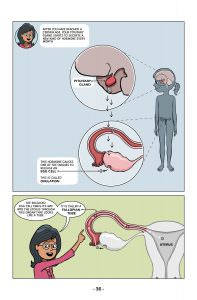
A: This project started at National Institute of Design. When we were students, we first decided to make a computer game. Once we made the game we realised the flaws it had: for example not everyone would have access to a computer, and with that limitation we dropped that idea. Then we decided to make a board game, but not all the concepts we engage with could be fixed on a board, so we dropped that too. When you design an educational tool, the product goes through a lot of iterations, and each iteration is not a failure but one you can build upon. The Menstrupedia comic book that you see now is actually the knowledge that has been drawn out of the shortcomings of the other mediums. At the end of our course we decided to go towards a graphic narrative approach because Tuhin was reading a lot about how to use a graphic narrative to approach sensitive issues.
Q5. Your website mentions that the comic books are culturally sensitive, how was that achieved?
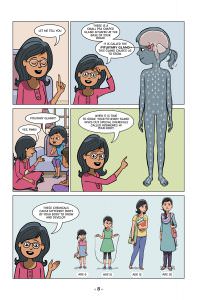
A: Let’s say we are talking about growing breasts, most books in the market about puberty are done by NGO’s or foreign authors. Even if it is a cartoon-ish anatomy, if it is without clothes and there are two dots, symbolising the breasts, it indicates that it is a bare body. When we had to show the growth of breasts or widening of hips, we had shown it under clothes and not a body without clothes. As one starts to put a face to it, kids especially try to identify it with someone they know. There is a thin line between what our parents consider pornographic or objectionable and acceptable when talking about body parts. However we engage with a lot of creative freedom on our website.
One instance of feedback on our site stated that, “You ask us to use tampons but how do we pee? Do I take the tampon out every time I have to pee?” The urinal opening is different from the vaginal opening, but it is not known to a lot of women. We wanted women to understand the anatomical part, for which we drew a detailed image for the website, showing all three openings: urethra, vagina and the anus. But in the comic book we made Priya Didi draw a much rendered image, nothing detailed but enough to understand.
We use the technical terms and make sure not to give it a sexual impression. Our book does open up other conversations but our focus is only about menstruation.
Q6. Could you tell us more about the workshops that are organised by Menstrupedia?
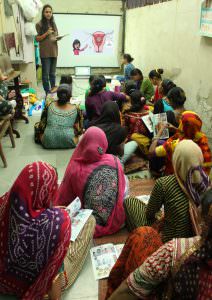
Our main aim is to create educational resources for trainers as it empowers people to educate girls about menstruation. It could be a bunch of men trying to talk to their daughters, bunch of teachers or a 12th standard girl and we want to make resources for all these people. Whenever we take workshops, we also take them to educate ourselves – to know what the gap is between the trainer and the girls in the class, what the educator needs, what stops a person from talking about menstruation and how we can help them. What we aim at is to spread period positivity.
Two hours are not enough for informing the girls and not all girls will be open to it, but it does provide an introduction to what is happening to your body. What glands are responsible for the changes, what nutrition one requires, how to prepare for menstruation, etc. But what is more important is breaking the taboo, so during our workshops we make them scream ‘vagina’ and ‘periods’ loudly. Just by shouting these words out loud they are breaking so many barriers.
Q7. The comic books are available in 14 languages, including 2 foreign languages: Nepali and Spanish. Could you shed some light on the why the translation in the two languages? How has the impact been of the translations?
Translations were done according to the demands we got. Hindi and English were the obvious language choices. Then Gujarati and Marathi were easy for translation as we were working in that region and since Bengali is Tuhin’s mother tongue, we could easily do that. We had a lot of demands from the southern part of the country as well. There was an inquiry about translation in Oriya, Punjabi and Assamese, which we will cover probably within this year.
Where Nepali was concerned, a group of people were following Menstrupedia and managed to crowd fund within 5 days, required to translate, print and ship a 1000 copies. In those copies we talked about menstrual cups too, as they were distributing the cups to their target group. They made a business model by selling these books in various stores, NGOs and schools. This was the third year of our partnership and now they print the comic books locally.
We also got lots of mails and inquiries in Spanish. Then a woman named Carla ordered 30 books in English and manage to sell them for a profit in Uruguay, South America. She was leaving her job and looking to start her business selling cloth pads, menstrual cups. She then thought of selling the Mentrupedia comic books and we decided to translate and make amends keeping their location in mind. Now she gets the books printed there locally as shipping costs more than the cost of the books and this is the second year in partnership. We also translate in Russian and Bulgaria, and are working towards translations in Persian.
Q8. What was the intention behind the blog? How diverse are the contributors?
It started as a crowd-sourcing platform. We needed to have a platform with focused articles and discussions on menstruation. We wanted the blog so that people feel it is alright to talk about periods and understand it isn’t a big deal. It should be a normal conversation. Since the writers saw that so many people are talking about it, more people wrote and the articles went viral, got shared more and more. It became a platform where people accessed advice.
What we did in the beginning was we’d ask for articles from people and we’d make a beautiful illustration. Our communication strategy was to flip the narrative, with visual communication, which gives us that power to show a topic seen negatively, now to be shown positively in an affirmative light. Our website shows illustrations that are bright and beautiful. You can open it anywhere and read about menstruation.
We have a community of 3000+ writers’ men, women and children as young as 12 years could. We don’t ask people their gender: they could identify as men/women/gender non-conforming. But we have a record of their names and ages.
Q9. What do we look out for in the future from Menstrupedia?
This is the beginning of our work but we have been able to bring menstruation into the mainstream discussions in five years – various kinds of discussions about sanitary napkins, conversations are becoming positive, we see periods being mentioned by actresses, among others.
We want to create a nationwide educational infrastructure about menstruation. We started with educating girls of 9 years old but we want to do it for parents, teacher and boys. We want to talk about other gender issues too. We have the ability to make effective educational tools for child sexual abuse. Sensitising them about intercourse, contraception, even menopause. So that’s the future for us, we will always keep it inclusive and multilingual, so our resources are available in all Indian languages, and we’d like to reach out to both urban and rural areas.
Q10. Any relevant comment or advice for the parents, teachers, friends, family or siblings of the girl’s approaching the age of puberty and the boys who could be sensitised to the biological process?
A: I always request parents to be period positive, because if parents, especially mothers, are ashamed about menstruation, their daughters will be too. And that actually propagates the taboo and evil around menstruation. Period positive outlook will help families to have conversations, get correct information, clear doubts and learn more. You’ll hear me saying this a lot of times that we as a family and society bring up our girls with a lot of shame and boys with ignorance.
Also the preconceived notion that what will boys think, and do hoo-haa, but my best workshop has been with boys, of standard 4th and 5th, when their gender stereotype haven’t been formed. At this age we haven’t snatched away their ability to question and when these boys ask me that, ‘alright fine now I understand it’s not a diaper but what should I do’? That’s when we say that you know you could get sanitary napkin for your mother or sister or help them in their daily chores. We can really raise sensitive men and it all starts in homes and schools, by including boys in the conversation about menstruation.
Also read: Menstrupedia Comic: A Review
All images courtesy Menstrupedia. Check out their website here and follow them on Facebook, Twitter and Instagram.
About the author(s)
Shivani is a day dreamer, a foodie, a dog lover and a chai enthusiast. She is a resolute feminist, and loves to learn more and more about gender issues.
